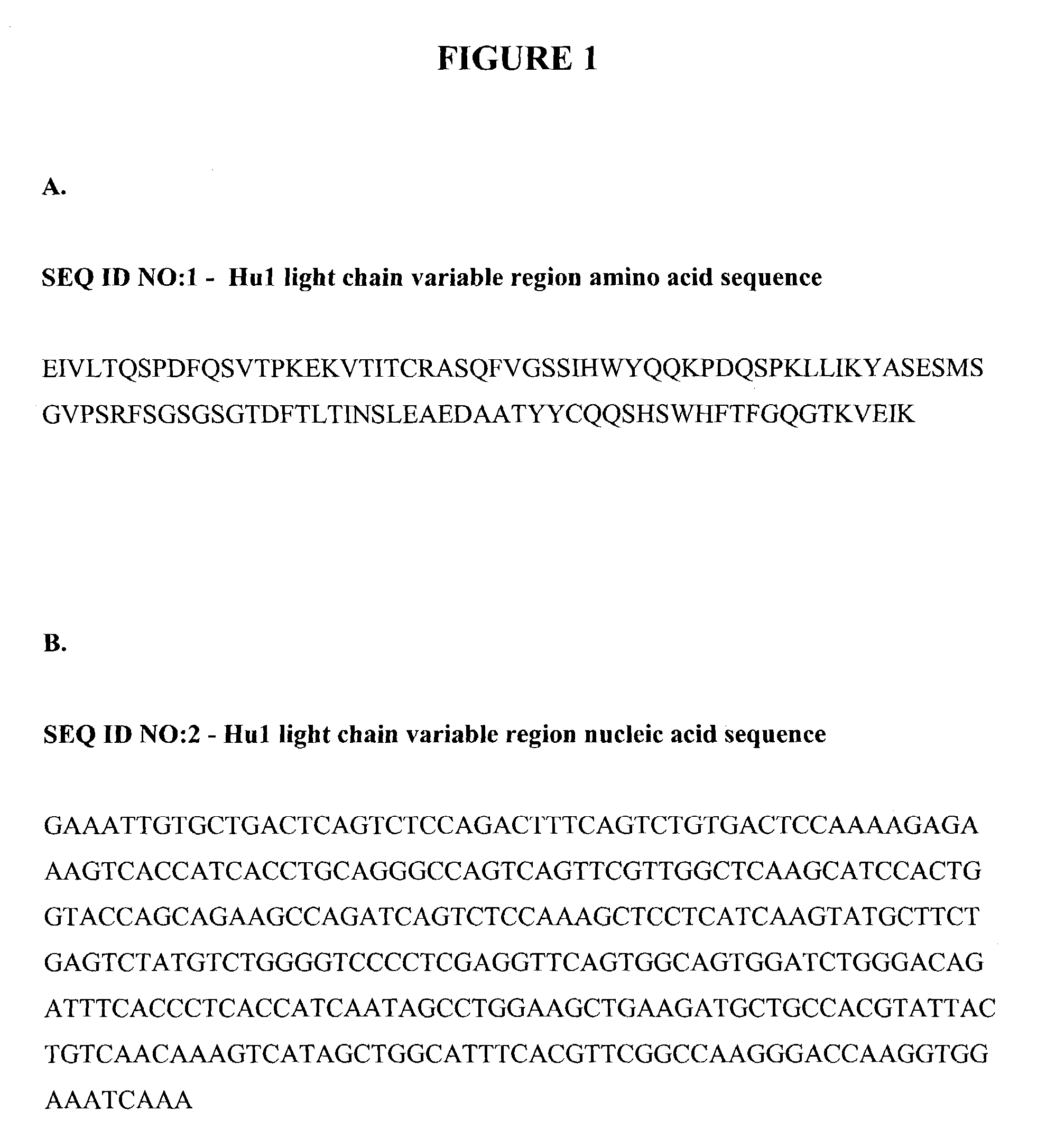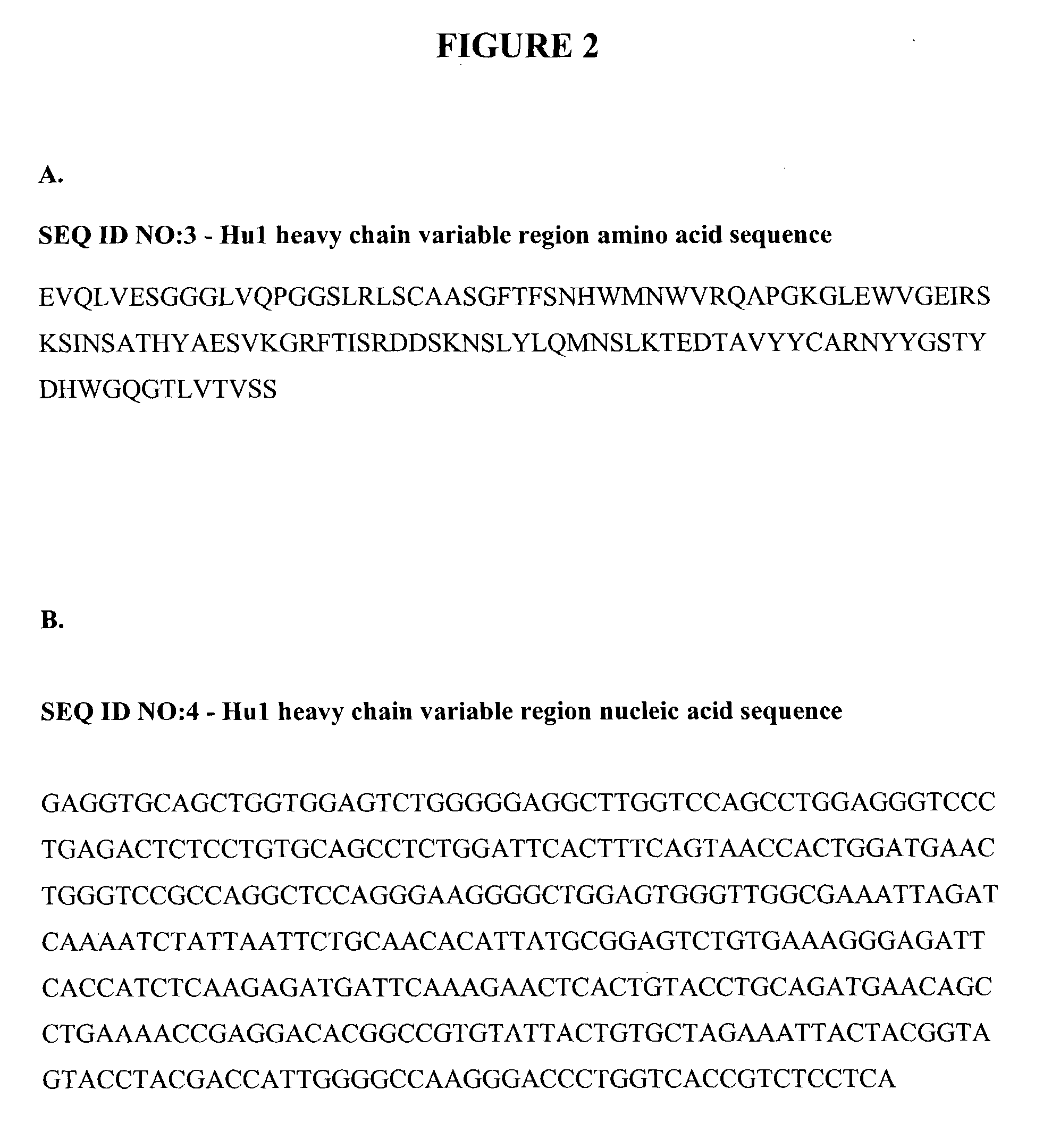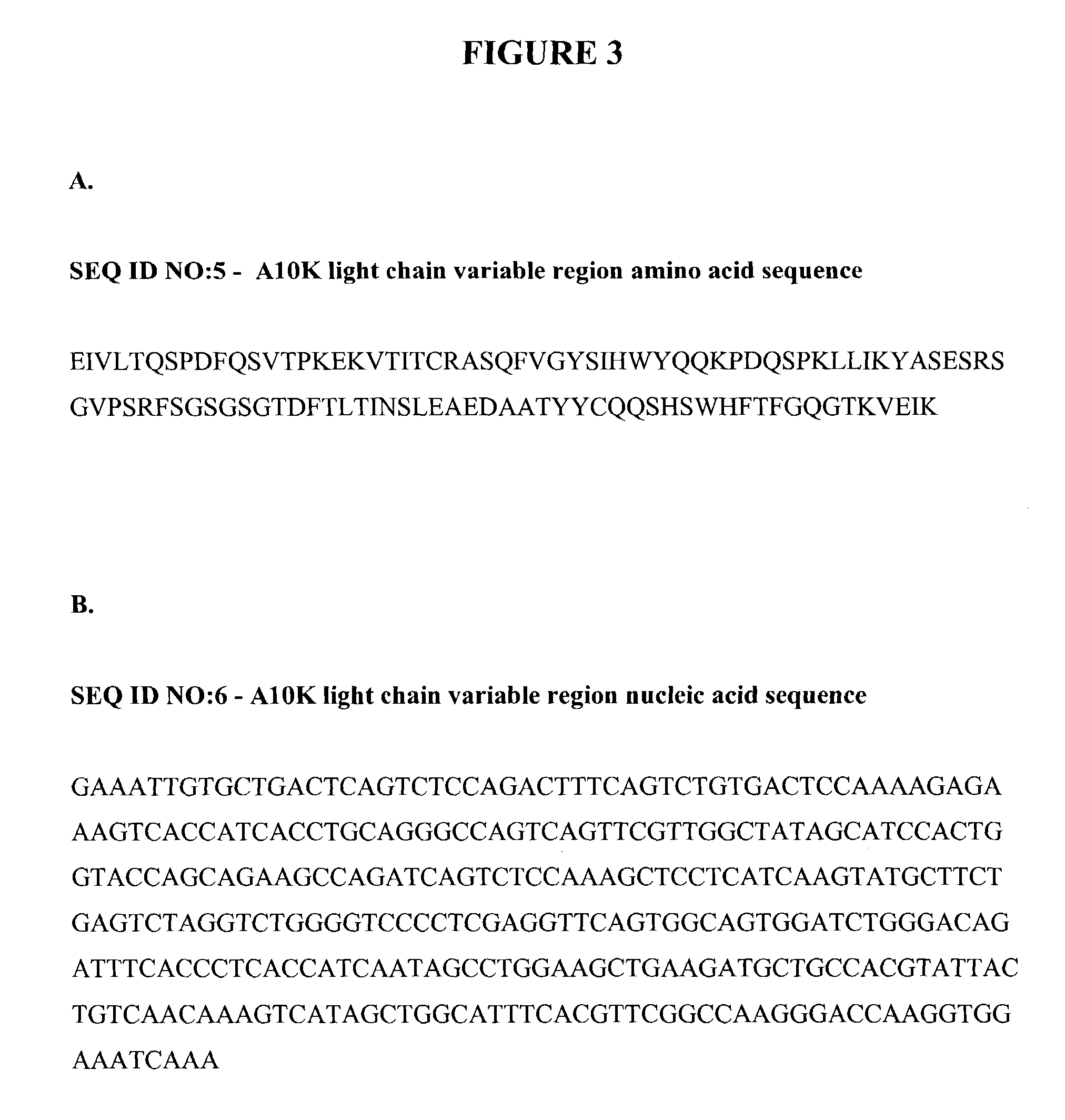TNF-α binding molecules
a technology of binding molecules and nucleic acids, applied in the field of tnf- binding molecules and nucleic acid sequences, can solve the problems of short serum half-life, inability to trigger certain human beings, limited use in vivo, etc., and achieve low dissociation rate, high binding affinity, and high association rate
- Summary
- Abstract
- Description
- Claims
- Application Information
AI Technical Summary
Benefits of technology
Problems solved by technology
Method used
Image
Examples
example 1
Construction and Screening of Anti-TNF-α Fab Fragments with Synthetic CDRs and Human Frameworks
[0206]This example describes the construction of anti-TNF-α Fab fragments with fully human framework regions and synthetic CDRs. The nucleic acid sequences encoding the hu1 CDRs and framework regions are shown in SEQ ID NOs: 2 and 4, respectively. The six hu1 CDRs employed were as follows: CDRL1 (SEQ ID NO: 10); CDRL2 (SEQ ID NO: 20); CDRL3 (SEQ ID NO: 34); CDRH1 (SEQ ID NO: 36); CDRH2 (SEQ ID NO: 44); and CDRH3 (SEQ ID NO: 54).
[0207]In order to identify mutations that improve the binding properties of hu1, libraries of synthetic CDRs were inserted into a deletion template as described below. Standard mutagenesis techniques (Kunkel, T. A., (1985) Proc. Natl. Acad. Sci. U.S.A, 82: 488–492, herein incorporated by reference) were employed to individually replace each hu1 CDR with a pool of mutagenic oligonucleotides. In this example, the CDRs include residues that encompass both the Kabat and...
example 2
Characterization of Anti-TNF-α Binding Molecules with Improved Binding Properties
[0218]This example describes various in vitro testing procedures used to identify particular characteristics of the eight anti-TNF-α binding molecules from Example 1. First, the ability of these Fab fragments to prevent TNF-α-mediated cell death was assessed by evaluating their protective effects on L929 mouse fibroblasts. Specifically, L929 mouse fibroblast cells were distributed in individual wells in a 96-well plate at a density of 20,000 cells per well and maintained according to ATCC recommendations. After overnight incubation, Fab fragments released from the periplasmic space were serially diluted in culture medium, sterile filtered and 50 μl were added to the wells along with actinomycin D to a final concentration of 1 μg / ml. Immediately thereafter, hTNF-α was added to a final concentration of 80 pg / ml and the plates were placed in a humidified incubator at 37° C. in a 5% CO2 atmosphere. After ov...
example 3
In Vivo Examples with A10K
[0223]This example describes two in vivo assays with the A10K intact IgG. In particular, this example describes the in vivo TNF-α neutralizing effects of A10K in mice, as well as the protective effects of A10K on TNF-α mediated polyarthritis in mice.
[0224]The TNF-α neutralizing ability of A10K in vivo was evaluated as follows. Female C3H / HeN mice (˜9 weeks of age) were injected intraperitoneally with recombinant human TNF-α (5 μg / mouse) in combination with the sensitizing agent galactosamine (18 mg / mouse). In untreated mice, these conditions result in approximately 90 percent mortality within 48 hours. The neutralizing effect of A10K was evaluated by injecting mice with 0.8 and 4 mg / kg, intravenously, 24 hours prior to hTNF-α challenge. A10K demonstrated a dose-dependent inhibition of mortality, with complete protection being observed at the higher dose investigated. These results are presented in FIG. 11.
[0225]The effect of A10K on TNF-α mediated polyarthr...
PUM
| Property | Measurement | Unit |
|---|---|---|
| Molar density | aaaaa | aaaaa |
| Frequency | aaaaa | aaaaa |
| Molar density | aaaaa | aaaaa |
Abstract
Description
Claims
Application Information
 Login to View More
Login to View More - R&D
- Intellectual Property
- Life Sciences
- Materials
- Tech Scout
- Unparalleled Data Quality
- Higher Quality Content
- 60% Fewer Hallucinations
Browse by: Latest US Patents, China's latest patents, Technical Efficacy Thesaurus, Application Domain, Technology Topic, Popular Technical Reports.
© 2025 PatSnap. All rights reserved.Legal|Privacy policy|Modern Slavery Act Transparency Statement|Sitemap|About US| Contact US: help@patsnap.com



